
For generations, two mighty giants, Marvel and DC, have dominated the world of comics. With their larger-than-life superheroes and supervillains, these iconic universes have inspired countless toys and collectibles. In this blog post, we’ll delve into the fascinating world of Marvel vs. DC toys, examining their history, characters, and the enduring debate over which reigns supreme.
The Origins of Marvel and DC
Marvel and DC, both short for Detective Comics, share a common origin in the 1930s. Marvel introduced characters such as Spider-Man, the X-Men, and the Avengers. In contrast, DC brought to life iconic figures like Batman, Superman, Wonder Woman, and the Justice League. The two companies have had a friendly rivalry for decades, and this rivalry extends to the toy aisle.
The Marvel Universe
Thanks to their relatable characters and captivating storylines, Marvel’s toys have always enjoyed popularity. The Marvel Cinematic Universe (MCU) has further catapulted these characters into the mainstream. Iconic action figures like Spider-Man, Iron Man, and the Hulk have become beloved collectibles for fans of all ages. Marvel’s extensive character roster allows for a diverse array of toys, appealing to a wide audience. Here’s how it all began;
In the vibrant tapestry of comic book history, one name stands out with a brilliance that has transcended generations — Marvel. The birth of Marvel Comics is a tale woven with creativity, innovation, and a dash of superhero magic.
The Early Years
It all began in 1939 when a small publishing company called Timely Comics emerged. Founded by Martin Goodman, Timely initially delved into various genres, from horror to romance. However, it was the superhero genre that eventually stole the spotlight. Timely’s first superhero, the Human Torch, ignited the flames of the superhero era.
Swinging into the Future
Fast forward to 1961, a pivotal year that witnessed the dawn of the Marvel Universe (MU). Enter writer Stan Lee and artist Jack Kirby, the dynamic duo credited with co-creating the Fantastic Four. This groundbreaking superhero team shattered conventions by introducing flawed characters with relatable struggles. This was a departure from the one-dimensional heroes of yesteryear.
Building Worlds, Building Brands
The success of the Fantastic Four paved the way for an unprecedented era of creativity. The MU continued its rise with the introduction of iconic characters such as Spider-Man, Thor, Hulk, and Iron Man. Besides those few characters, the creation of the X-Men was pivotal in obtaining a new generation of fans. The variety of characters connected with many young readers as they could relate to the aspect of being an outsider. Marvel wasn’t just telling stories; it was shaping a universe — where heroes grappled with real-world problems. This gave readers a mirror to reflect upon their humanity and a feeling of security and inclusion.
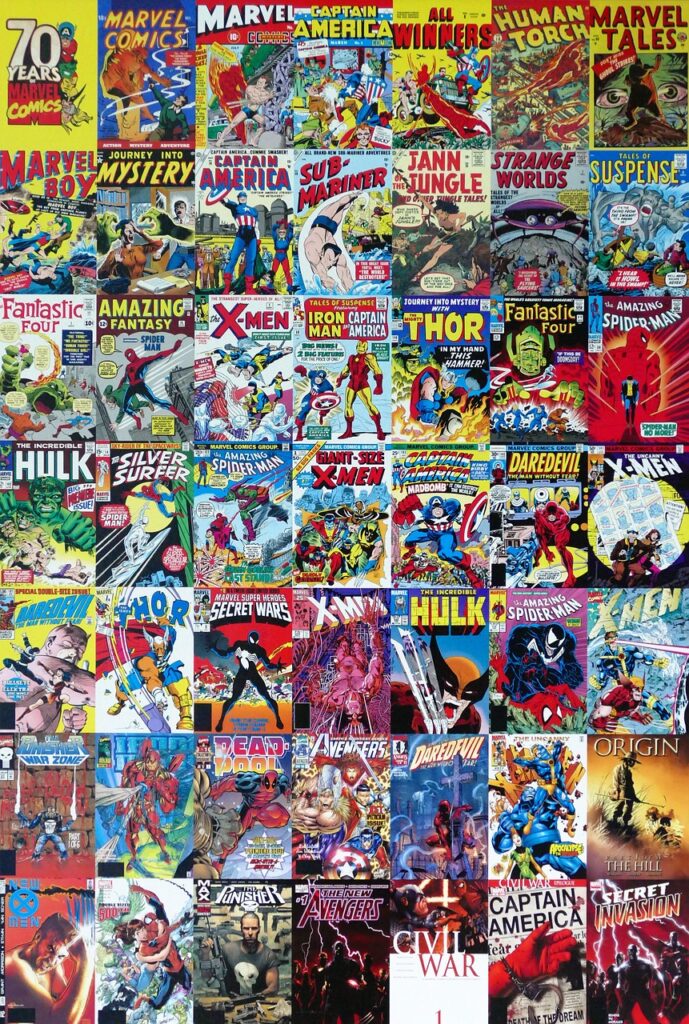
Stan Lee’s trademark exclamation, “Excelsior!” echoed the spirit of Marvel — ever upward, ever onward. The MU became a living, breathing entity, where interconnected stories unfolded, and characters evolved with each turn of the page.
Avengers, Assemble!
The Avengers, a superhero team in the Marvel Comics universe, made their debut in “The Avengers” #1, published in September 1963. Created by writer Stan Lee and artist Jack Kirby, the Avengers brought together a group of Marvel’s most iconic superheroes to form a formidable team.
The original lineup consisted of Iron Man (Tony Stark), Thor, Hulk (Bruce Banner), Ant-Man (Hank Pym), and the Wasp (Janet van Dyne). Their formation was prompted by the villain Loki, who sought to pit Thor against the Hulk. In response, these heroes joined forces to thwart Loki’s plans. This marked the beginning of the Avengers’ legacy as Earth’s mightiest heroes.
Over the years, the Avengers roster has undergone numerous changes, with many well-known Marvel characters joining and leaving the team. Captain America (Steve Rogers), Hawkeye (Clint Barton), Black Widow (Natasha Romanoff), Black Panther (T’Challa), Spider-Man (Peter Parker), Scarlet Witch (Wanda Maximoff), and Vision are among the notable members who joined the team in subsequent issues.
The Avengers have faced a myriad of powerful foes, including extraterrestrial threats like the Skrulls and the Kree, powerful mutants like Magneto, and cosmic entities such as Thanos. The team has been instrumental in defending the Earth from various catastrophic events, showcasing their ability to unite against overwhelming odds.
Impact On Society
Marvel’s impact on popular culture was seismic. Its comics were not just tales of heroism; they reflected the times, addressing social issues and pushing boundaries. Marvel became a cultural juggernaut, expanding beyond comics into television, film, and merchandise.
Today, the legacy of Marvel endures. Its characters have become global icons, and the Marvel Cinematic Universe (MCU) stands as a testament to the enduring power of storytelling. The birth of Marvel wasn’t just the creation of a comic book publisher; it was the inception of a cultural phenomenon that continues to captivate audiences around the world. Inviting the reader/viewer to embark on a marvelous journey of imagination and heroism.

The DC Universe
DC’s toys have also left a mark on the toy industry, with figures of Batman, Superman, and Wonder Woman gracing the shelves for generations. The DC Extended Universe (DCEU) has rejuvenated interest in DC characters and their corresponding toys. The Batman action figures, Batmobile replicas, and Justice League-themed collectibles continue to be highly sought after. Let’s take a deeper look into the birth of DC Comics.
The Early Years
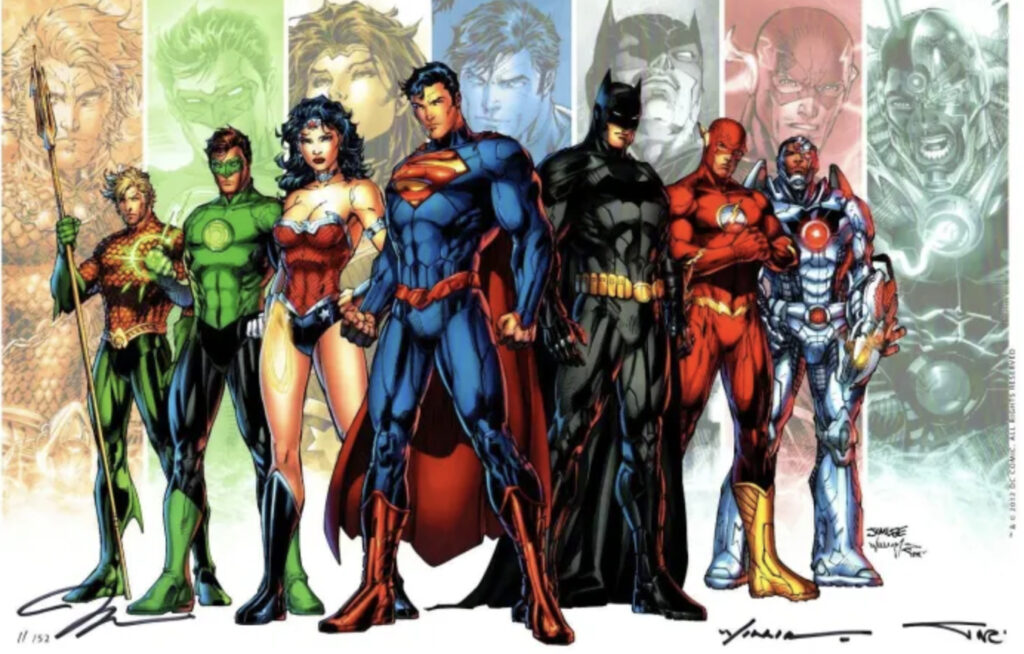
The story begins in 1934 when Malcolm Wheeler-Nicholson founded National Allied Publications, which later evolved into DC Comics. The company initially explored a variety of genres, including detective stories and adventure tales. However, it was the introduction of Superman in 1938 that catapulted DC into the forefront of the burgeoning superhero genre.
Created by Jerry Siegel and Joe Shuster, Superman became the archetype of the superhero — a powerful and virtuous character with a dual identity. The success of Superman paved the way for a new era in comics, leading to the formation of Detective Comics, Inc. and the subsequent amalgamation into DC Comics.
The 1940s witnessed the emergence of other legendary characters, including Batman, Wonder Woman, and The Flash. Each character brought a unique flavor to the DC superheroes narrative, establishing the foundation for what would become the expansive DC Universe.
The term “Golden Age of Comic Books” encapsulated this period of innovation, with DC leading the charge. As the years unfolded, DC continued to diversify its superhero roster, introducing the Justice League of America in the 1960s, uniting its most iconic heroes in a collaborative effort to combat threats to Earth.
DC’s storytelling approach evolved over the decades, incorporating complex narratives and exploring the human side of its superheroes. The company’s commitment to character development and rich storytelling laid the groundwork for a multiverse, where alternate realities and parallel dimensions coexisted.
Some of the most iconic DC comic characters formed the Justice League:
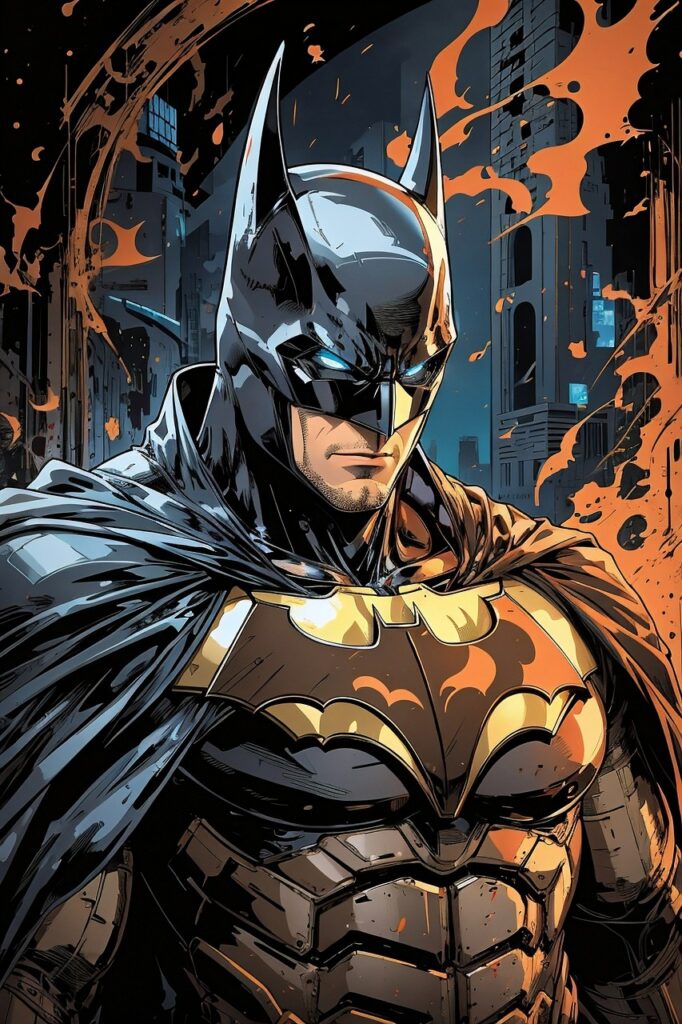
- Superman (Clark Kent): The Man of Steel, Superman is an alien from the planet Krypton with superhuman strength, speed, and the ability to fly. He is often considered the quintessential superhero and serves as a symbol of hope and justice.
- Batman (Bruce Wayne): The Dark Knight, Batman is a billionaire playboy who dons the cape and cowl to fight crime in Gotham City. With no superpowers, Batman relies on intellect, detective skills, and a range of gadgets.
- Wonder Woman (Diana Prince): An Amazonian princess and warrior, Wonder Woman possesses super strength, agility, and a magical Lasso of Truth. She is an ambassador for peace and equality.
- The Flash (Barry Allen): A forensic scientist struck by lightning, Barry Allen gains super speed, becoming the Scarlet Speedster known as The Flash. He protects Central City and is a key member of the Justice League.
- Green Lantern (Various): The Green Lantern Corps is an intergalactic police force, with each member equipped with a power ring that can create energy constructs based on the user’s willpower. Various characters have taken on the role of Green Lantern.
- Aquaman (Arthur Curry): The King of Atlantis, Aquaman possesses superhuman strength, the ability to communicate with sea life, and control over the oceans. He is a founding member of the Justice League.
- Cyborg (Victor Stone): A former athlete turned half-human, half-machine hero, Cyborg is a technological powerhouse and a member of the Justice League. His cybernetic enhancements grant him incredible abilities.
- Green Arrow (Oliver Queen): A skilled archer and vigilante, Green Arrow fights crime with his bow and arrows. Known for his social justice stance, he’s a member of the Justice League.
- Shazam (Billy Batson): A young boy gifted with the power to transform into an adult superhero by uttering the word “Shazam,” Billy Batson becomes a hero with the wisdom of Solomon, strength of Hercules, and more.
- Martian Manhunter (J’onn J’onzz): The last survivor of Mars, Martian Manhunter has shape-shifting abilities, telepathy, and super strength. He is a founding member of the Justice League and a powerful force for good.The Justice League, often referred to as “Earth’s Mightiest Heroes,” is a legendary superhero team in the DC Comics universe, uniting some of the most powerful and iconic characters to protect the world from extraordinary threats. Comprising a diverse group of superheroes with distinct abilities and backgrounds, the Justice League exemplifies the strength that comes from unity.The core members of the Justice League typically include Superman, Batman, Wonder Woman, The Flash, Aquaman, and Green Lantern, among others. These heroes, each with their unique strengths and skills, join forces to confront formidable adversaries that no single hero could face alone.

The Future
In the 21st century, DC Comics expanded its influence beyond print, making significant strides in animation, television, and film. The DC Extended Universe (DCEU) brought its characters to the silver screen, captivating audiences worldwide.
The birth of DC Comics wasn’t just the establishment of a publishing powerhouse; it was the inception of a cultural legacy. Superman, Batman, Wonder Woman, and countless others became symbols of heroism, inspiring generations to dream of a world where the extraordinary is possible. As DC continues to evolve, its characters and stories remain timeless, leaving an indelible mark on the landscape of popular culture.
The Collectible Universe
Both Marvel and DC have been successful in the collectible toy market. Limited edition, high-quality figurines, statues, and busts cater to the tastes of dedicated collectors. From detailed Hot Toys/Sideshow Collectibles to Neca, Bandai, and McFarlane toys. These premium statues and collectibles are works of art, representing the characters with incredible fidelity. Let’s take a deeper look into the world of collectibles.
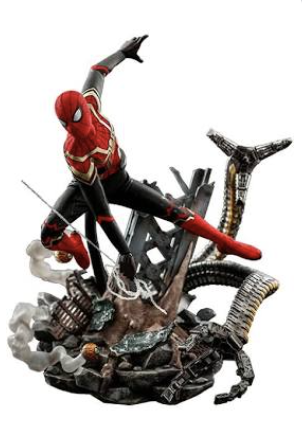
In the vast realm of fandom, the collectibles market for Marvel and DC Comics stands as a testament to the enduring love for these iconic universes. From vintage comic books to action figures and rare memorabilia, enthusiasts around the globe are drawn to the allure of owning a piece of superhero history.
Comics as Treasured Artifacts:
Vintage comic books from Marvel and DC are the crown jewels of many collectors. First editions, key issues, and rare variants can fetch impressive prices on the market. Whether it’s the debut of Spider-Man or the origin of Batman, these comics are not just stories; they are tangible pieces of cultural history.
Action Figures and Statues:
The collectibles market extends beyond the pages of comic books to three-dimensional representations of beloved characters. Action figures and statues capture the essence of superheroes in intricate detail. Limited edition releases and exclusive variants turn these figures into highly sought-after items, with collectors meticulously curating their displays.
Rare and Limited Edition Merchandise:
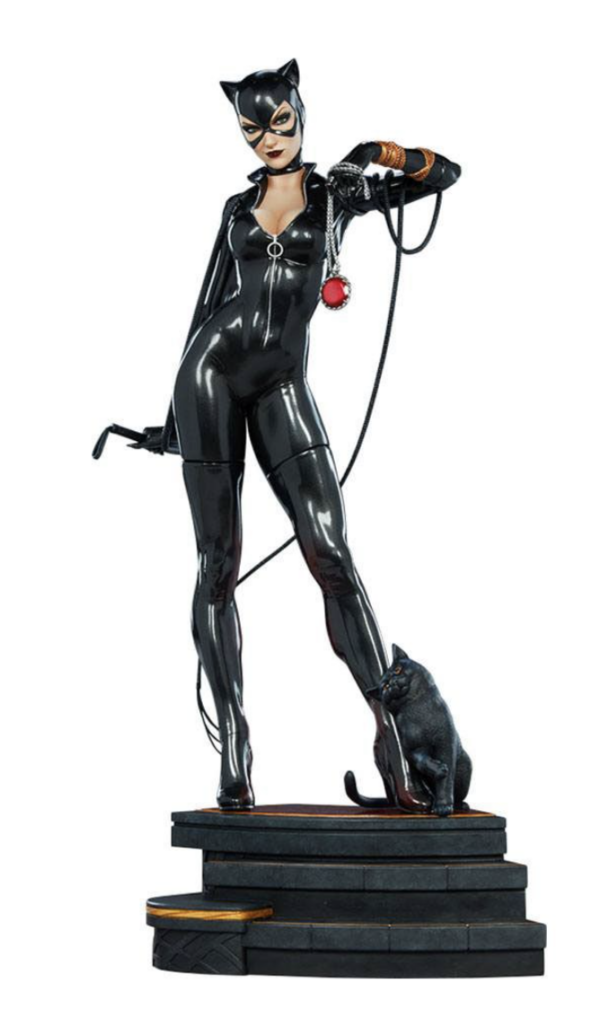
The allure of rarity drives collectors to seek out limited-edition merchandise. From exclusive comic book covers to signed prints, fans relish the opportunity to own something unique. These items become not only conversation pieces but also cherished artifacts that connect collectors to the creators and the characters they love.
Comic-Con Exclusives and Events:
Comic conventions, such as San Diego Comic-Con, have become pivotal hubs for collectors. Exclusive releases, signings, and panel discussions offer fans the chance to dive deeper into the worlds of Marvel and DC. The excitement generated by these events often translates into increased demand for exclusive collectibles.
The Influence of Cinematic Universes:
The rise of the Marvel Cinematic Universe (MCU) and the DC Extended Universe (DCEU) has significantly impacted the collectibles market. Characters brought to life on the big screen inspire a new wave of fans to explore the source material. Limited edition movie-related collectibles, from posters to prop replicas, become coveted pieces for both seasoned collectors and newcomers alike.
Digital Collectibles in the Modern Age:
As technology advances, digital collectibles have also entered the scene. Non-fungible tokens (NFTs) representing digital art and collectibles related to Marvel and DC have gained traction. These blockchain-based assets add a modern twist to the traditional collectibles market.
In the dynamic world of Marvel and DC collectibles, the passion of fans fuels a market where nostalgia and the thrill of discovery intersect. Whether it’s a vintage comic or an exclusive action figure, each item tells a story and contributes to the ever-evolving narrative of these beloved superhero universes. The collectibles market, in its diversity and fervor, mirrors the enduring impact that Marvel and DC have had on popular culture.
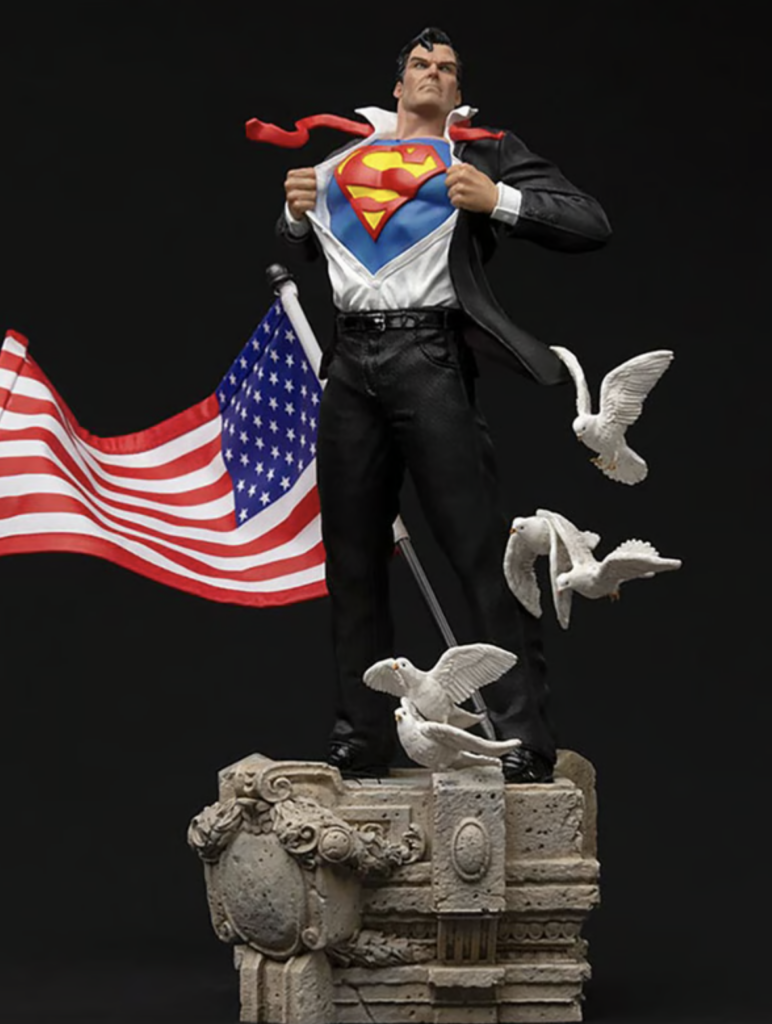
Crossover Success
In some instances, Marvel and DC have ventured into crossover events, and their toys have followed suit. Fans have been treated to action figure duels like Spider-Man vs. Batman or Thor vs. Superman, fanning the flames of the age-old Marvel vs. DC debate, in an entertaining way.
In the realm of comic book storytelling, Marvel and DC Comics have not only captured the hearts of die-hard fans but have also achieved unparalleled success by transcending the boundaries of the page. The phenomenon of crossover success has propelled these iconic universes into the forefront of popular culture, reaching audiences far and wide.
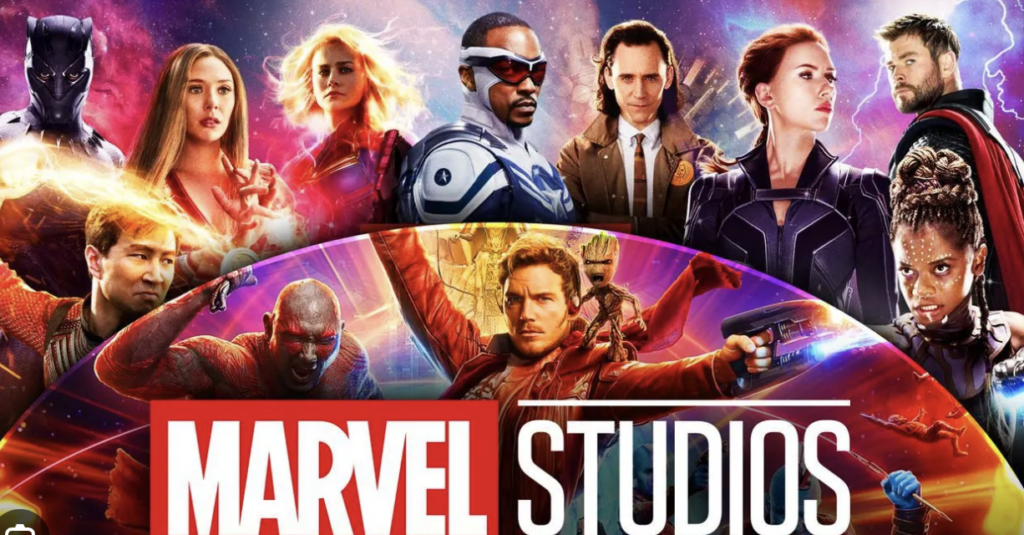
Cinematic Marvels and Dazzling DC Heroes:
The advent of cinematic universes has been a game-changer for Marvel and DC. Marvel, with its groundbreaking Marvel Cinematic Universe (MCU), and DC, through the DC Extended Universe (DCEU), have brought superheroes to life on the silver screen. Blockbuster films featuring Iron Man, Captain America, Wonder Woman, and Batman have not only dominated the box office but have become cultural touchstones, introducing these characters to a global audience. The Marvel movies as well as the DC franchise has helped to introduce the respective universes to a new generation. This has created an entire new base of Marvel fans as well as DC fans.
Small Screen Triumphs:
Beyond theaters, Marvel and DC have conquered the small screen. Television series like “Daredevil,” “Jessica Jones,” and “The Punisher” have added depth to the Marvel universe, while DC’s success on TV includes hits like “Arrow,” “The Flash,” and “Supergirl.” The episodic format allows for intricate storytelling, enabling fans to delve deeper into the lives of their favorite heroes and villains.
Streaming Dominance:
The rise of streaming platforms has further expanded the reach of Marvel and DC. Shows like “WandaVision,” “The Falcon and the Winter Soldier,” and “Loki” on Disney+ have continued Marvel’s narrative in the digital age. Similarly, DC’s presence on platforms like HBO Max has given fans access to a treasure trove of content, including exclusive series and classic animated shows.
Gaming Galore:
Marvel and DC have not overlooked the gaming industry. Video games featuring characters from both universes, such as the “Spider-Man” series on PlayStation and the “Batman: Arkham” series, have been met with critical acclaim. The interactive medium allows fans to step into the shoes of their favorite heroes and experience their adventures firsthand.
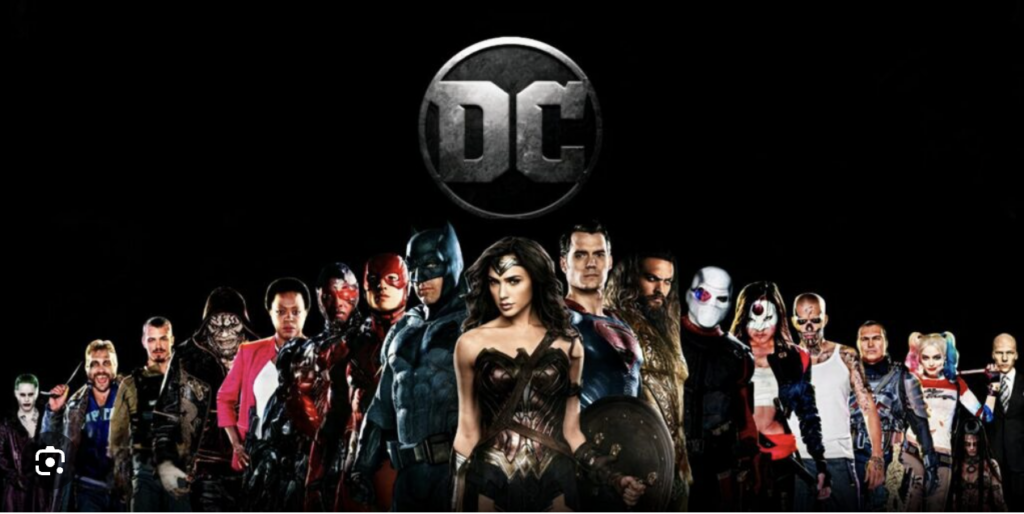
Merchandising Mastery:
The success of Marvel and DC extends beyond the screen to the world of merchandise. Action figures, clothing lines, and collectibles featuring iconic characters have become staples in the lives of fans. The power of branding has allowed these superheroes to become cultural symbols, adorning everything from lunch boxes to backpacks.
Cross-Company Collaborations:
In a surprising twist, both Marvel and DC have occasionally joined forces in the comic book world for crossover events. These collaborations, such as “Marvel vs. DC” and “Amalgam Comics,” bring characters from both universes together, creating unique and memorable stories that captivate fans of both camps.
Marvel and DC’s crossover success is a testament to the enduring appeal of superhero narratives. As these universes continue to expand across various mediums, their influence on entertainment, fashion, and popular culture remains indelible. The synergy between storytelling prowess, beloved characters, and strategic brand management has propelled Marvel and DC Comics into the pantheon of cultural legends.

The Enduring Debate
The Marvel vs. DC debate has raged on for generations, transcending toys and comics. It’s fueled by die-hard fans’ loyalty to their favorite characters and universes. Some prefer Marvel’s more relatable and flawed heroes, while others gravitate towards DC’s iconic, god-like figures.
Marvel vs. DC is a debate that’s as old as the comic book industry itself, and it has seamlessly extended to the world of toys and collectibles. Both universes have their unique strengths and characters that have captured the hearts of fans worldwide. Whether you’re Team Marvel or Team DC, there’s no denying the profound impact these toys have had on the lives of countless individuals, each playtime an epic battle or an adventure, and a testament to the enduring power of storytelling and imagination.
In the end, perhaps the greatest revelation is that these two titans of comics and toys coexist, enriching our lives in their unique ways. Ultimately, the choice between the two often comes down to personal taste and which stories resonate most with individual fans.


